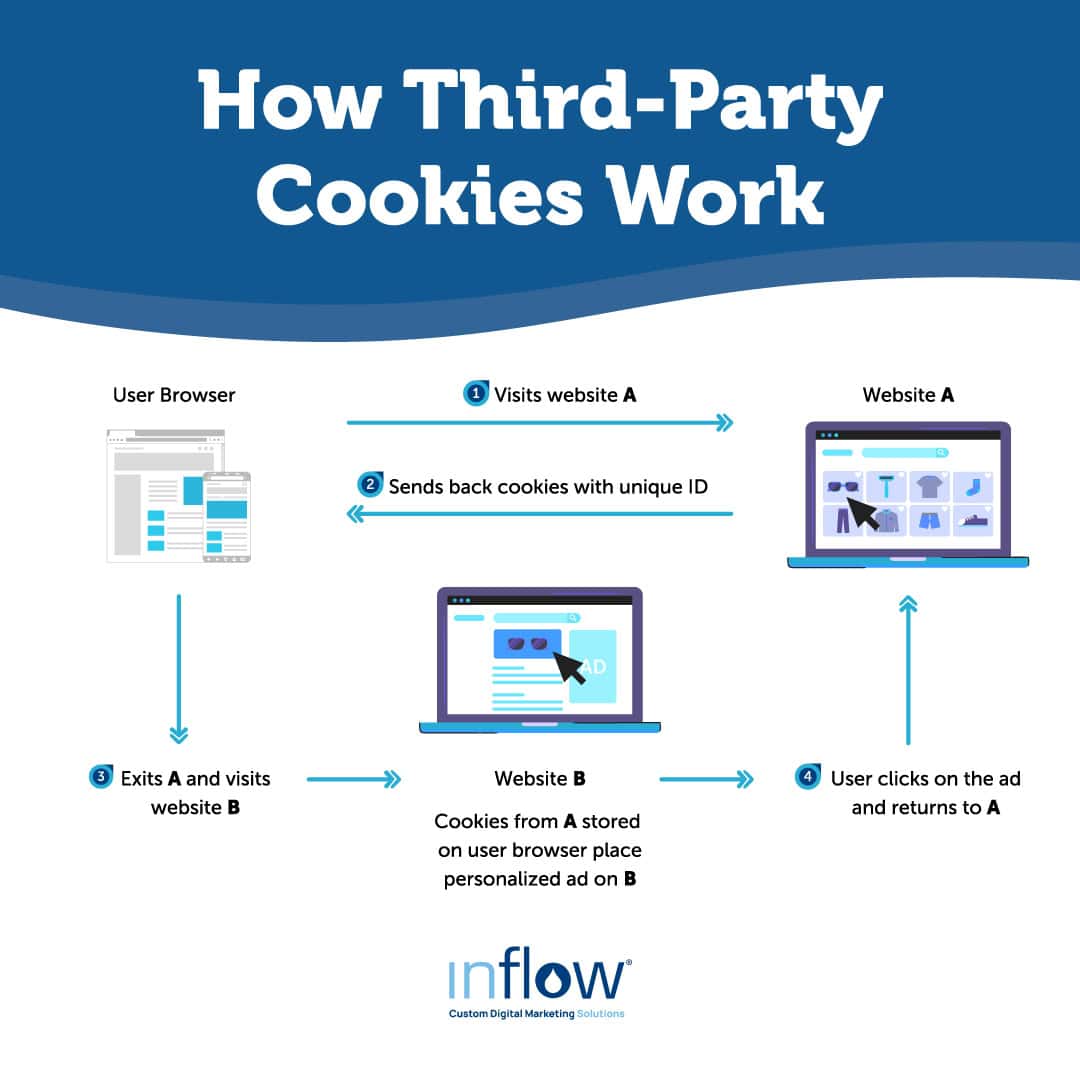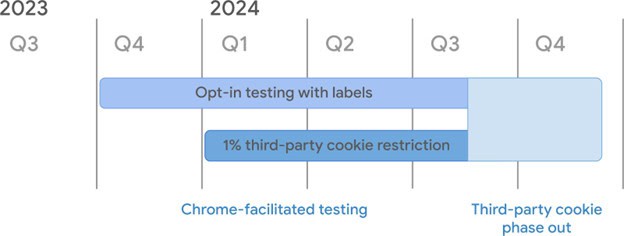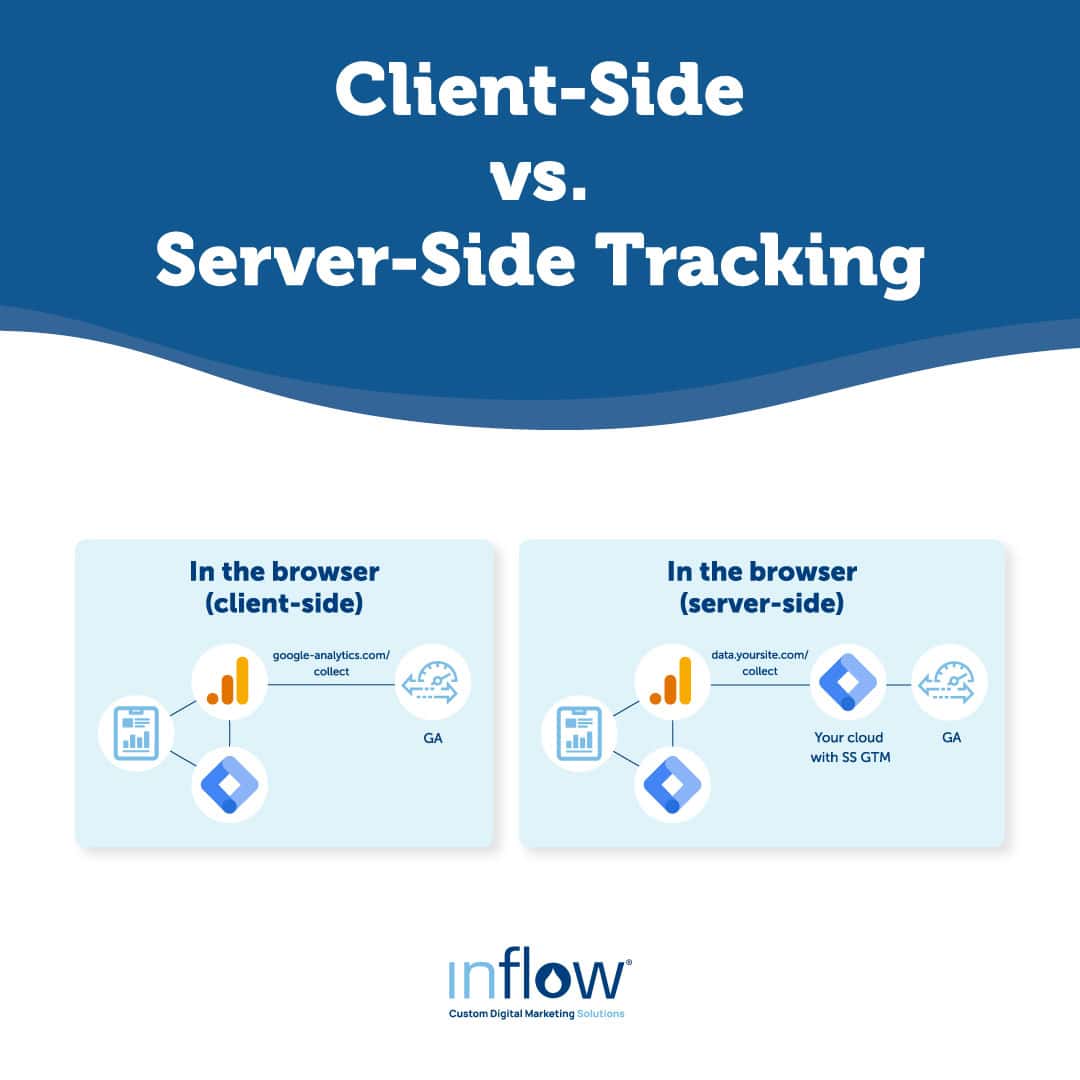At this point, it’s a tale as old as time. Advertisers wait with bated breath for Google’s long-anticipated deprecation of third-party cookies, only to hear the timeline has been pushed out, yet again, by the Google powers that be.
But that doesn’t mean your marketing team can get complacent. In fact, this extra time is the perfect opportunity to start building a killer post-cookie advertising strategy, one that will put you miles ahead of the competition when this update finally does roll out.
In today’s guide, we’ll give you everything you need to get started, including a rundown of what third-party cookies are, why they’re on their deathbed, and how your team can prepare for the eventual phaseout that we all know is coming.
Keep reading to learn more — or, if you’d like to skip straight to creating your own strategy with the help of our digital advertising experts, request a free consultation today.
Table of Contents
- Third-Party Cookies: What They Are & Why Advertisers Love Them
- Why Privacy Regulations Require a Change
- Google’s Third-Party Cookie Deprecation: A Timeline
- What Your Marketing Team Can Do to Prepare
Third-Party Cookies: What They Are & Why Advertisers Love Them
Cookies are cross-site tracking elements used by advertisers, marketers, and social media platforms to understand a user’s movements around the web and, in turn, better personalize targeting and remarketing campaigns according to that data.
In contrast to first-party cookies (which only track data for a website you’re on at any given time), third-party cookies are stored under a different domain than the one you’re visiting. This allows them to track your “trail” across the internet, gathering information about you as you move from tab to tab and website to website.
Here’s an example:
Let’s say you visit an eCommerce website and view a few product pages. Unbeknownst to you, that website placed a tracking cookie on your browser (via a third-party service such as Facebook or Google). When you click away from the site, that tracker follows your behavior and stores it within the advertisement platform.
A few days later, you may see those products popping up on unrelated sites through banner and sidebar ads. That’s all thanks to the third-party cookie, which allowed an advertiser to place that targeted ad where they expect you to browse based on the previously collected information.

As you can see, third-party cookies are incredibly useful tools for advertisers. They allow teams to personalize targeting ads based on a user’s browsing history, interests, and demographics, making the ads more relevant and increasing the likelihood of a conversion.
While these cookies are great for advertisers, not all users are aware of the full extent of their capabilities. Third-party cookies can collect a significant amount of personal information about a user, which can lead to security risks, especially when cookies are gathering personally identifiable data.
In the last decade, third-party cookies have also directly run up against modern privacy laws — which leads us to Google’s current deprecation situation.
Why Privacy Regulations Require a Change
You can largely thank the GDPR — the General Data Protection Regulation — for the upcoming deprecation of third-party cookies. In 2019, the court ruled that users in the EU must actively consent to all analytics cookies when they log on to a website. If they don’t, the website can’t drop analytics or web tracking cookies in the user’s browser (and especially can’t do so without a user’s knowledge in the first place!).
Because most third-party cookies operate without users’ consent (or even knowledge), the ruling was the writing on the wall for advertisers’ favorite tools.
While not all business websites operate in or serve European customers, the global nature of the internet requires a global approach — hence, Google’s plan to phase out all third-party cookies and eliminate the potential legal headache.
The GDPR ruling isn’t so much a cause as a symptom of a larger user privacy movement. Pew Research reports that 81% of American adults are concerned about how companies are using the data they collect about them, and 67% of adults say they have little to no understanding of what companies do with the data being collected.
In response to these demands from users craving more privacy on the web, both Safari and Firefox phased out their third-party cookies in 2013, leaving Google the last (and the largest) man standing.
It’s important to note that these global privacy protections also affect first-party cookies, requiring users to actionably opt-in to a website’s tracking when browsing (rather than the “implied consent” of ignoring “do not track” in the past).
Google’s Proposed Solution: The Privacy Sandbox
In response to these privacy requirements, Google announced its intended solution in August 2019: the Privacy Sandbox.
The initiative aimed to accomplish three goals:
- Keep user personal information private while browsing the internet
- Enable publishers and developers to keep online content free without relying on intrusive tracking
- Build new internet privacy standards in collaboration with members of the advertising and digital publishing communities
The video below is hosted on YouTube. If you need assistance with viewing the video, please contact info@goinflow.com.
Five years later, details on the initiative remain fuzzy. Google continues to push back its intended launch date for the Privacy Sandbox due to feedback from regulatory committees and internal complications with the project.
As of this article’s publish date, Google intends to start phasing out third-party cookies in Chrome by Q3 2024, with a completion date estimated sometime in 2025. To facilitate testing and make that date possible, the platform started restricting third-party cookies for 1% of users in January 2024.

Advertisers can currently opt into testing and provide feedback during this initial stage. Google also recommends that businesses audit their third-party cookie usage and test for breakage to better understand how this phaseout will affect their data reporting strategy through the end of 2024 and beyond.
Google’s Third-Party Cookie Deprecation: A Timeline
Google’s journey toward third-party cookie deprecation has been a long one, with no official end in sight.
For the last four years, the search platform has been testing out its replacements and pushing back its official deprecation date. We will keep this timeline as updated as possible as the process continues:
- August 2019: Google introduces its Privacy Sandbox initiative as a work in progress.
- January 2020: Google first announces its intentions to phase out third-party cookies, with an expected timeline of two years, to be complete in 2022.
- January 2021: Google announces its FLoC initiative (Federated Learning of Cohorts) as an aspect of its Privacy Sandbox, touted as an “effective replacement signal for third-party cookies.”
- March 2021: Google clarifies that it will not build alternative identifiers to track users across the web once third-party cookies are phased out. It estimates that FLoC cohorts will be available for public testing in Q2 2021.
- June 2021: Google delays the third-party cookie deprecation timeline for the first time, with plans to end support for those cookies by the end of 2023.
- July 2022: Google announces its second postponement of the third-party cookie phaseout, with a new estimated timeline of 2024.
- October 2022: Google increases the Privacy Sandbox Relevance and Measurement origin trial population to 5% of Chrome Stable users.
- July 2023: The Privacy Sandbox relevance and measurement APIs become available to all Chrome users.
- September 2023: Google’s Privacy Sandbox reaches general availability, allowing advertisers and developers to scale their usage of the new technologies.
- January 2024: The Chrome browser begins restricting third-party cookies for 1% of users through its Tracking Protection tool, with plans to ramp up those restrictions to 100% of users in Q3 2024.
- April 2024: Due to anti-competition concerns raised by the UK’s Competition and Markets Authority (CMA), Google delays full third-party cookie deprecation from the second half of Q4 2024 to early 2025.
You can read full recaps of Google’s updates on the Privacy Sandbox blog.
What Your Marketing Team Can Do to Prepare
It may seem like Google is the boy who cried wolf when it comes to deprecating their third-party cookies, but we do expect this change to happen eventually — and marketing teams who have spent this extra time preparing will be ahead of the competition when it does.
As your advertising team prepares for a cookie-less future, we recommend the following steps:
1. Invest in your first-party data.
In a cookie-less world, you will be responsible for gathering your own customer data. The more that you have, the better you can target and retarget audiences across channels like Google Ads and Meta Ads.
We recommend gathering this first-party data in as many places as possible, through as many avenues as you can. Then, you can combine it all into one CRM for the fullest picture of your target audience demographics, psychographics, and buying behavior.
Start by:
- Adding first-party cookie banners to your website that adhere to GDPR and CCPA requirements.
- Increasing your email subscriber list.
- Prompting your customers to create accounts on your site.
- Adding progressive form fields.
- Implementing a loyalty program.
- Launching lead generation campaigns on social media.
Remember the crucial rule of first-party data gathering: Whatever you’re offering your customers should be worth the information they’re providing. Test out different options — first-time-order coupons or discounts, research reports, free demos — to see what resonates best with your audience.
2. Dive into existing data sources.
Most marketing teams aren’t using their data sources — such as Google Analytics 4 and Meta’s campaign reporting — to their fullest advantage. You’d be surprised at the amount of helpful audience data hiding within these reporting tools, much of which can be used to inform your campaign targeting and overall advertising research.
Of course, this requires an expert eye. At Inflow, our paid social strategists manually review all client campaigns to identify new audience and growth opportunities, data that is not always obvious to the generalized marketer in Facebook’s ad reporting.
Similarly, our Google Analytics 4-certified analytics specialists regularly uncover new insights using tools like exploration reports, purchase funnel modeling, and predictive audiences.
The video below is hosted on YouTube. If you need assistance with viewing the video, please contact info@goinflow.com.
We offer personalized Google Analytics 4 training to help your team discover similar insights hiding in your reports. Contact us today to schedule your live training session.
3. Consider server-side tracking.
Server-side tracking is a popular alternative to client-side tracking (i.e. tags and pixels). When implemented correctly, it can deliver a more complete and accurate picture of your audience data.
In a nutshell, server-side tracking and server-side tagging send user data to a domain or subdomain of your website before passing it to your analytics platform. This creates an additional layer between a website and a data collection platform, providing increased security and control for your analytics team.

There are many ways you can employ server-side tracking (this guide describes a few), but all of them are technically complicated and require an experienced team to set up. That said, once it’s done, your data collection strategy will be set for whenever third-party cookies do end up disappearing for good.
Learn more about setting up server-side tracking with Inflow’s team (or with our recommended third-party programs) by scheduling a consultation today.
The End of Third-Party Cookies is Near. Don’t Delay!
No one can predict the timeline of Google’s eventual deprecation of third-party cookies. If history is any indication, we may have several years to prepare before the full update is made.
That doesn’t mean your marketing team can continue to kick the proverbial can down the road. On the contrary, developing your first-party data strategy now gives you the opportunity to determine which audience data you need, how you’re going to collect it, and whether it’s enough for your advertising needs in the future.
Here at Inflow, we’re actively testing our options and developing these strategies for our clients. If you’d like us to do the same for you, you can request a free proposal from our digital marketing experts anytime.
Until then, stay tuned to our blog for more content about Google’s deprecation of third-party cookies and our team’s recommended solutions.











0 Comments